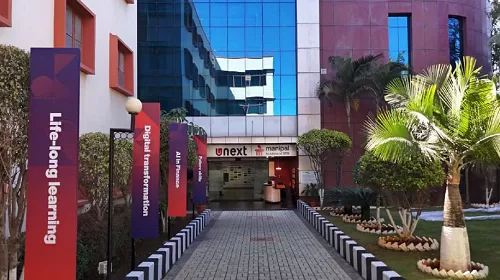By Dr. Neethu B and Dr. P. S. Harikumar, Center for Water Resources Development and Management
Around 80% of the water we use daily for domestic purpose goes as wastewater. Similarly, a huge quantity of wastewater is being generated atindustries, quality and quantity of which varies with the product as well as process involved. Hence, wastewater has gained much attention as a problematic substance by large proportion of the population. As one-quarter of the world now faces water stress, the sole purpose of wastewater treatment plant is being focused to deliver clean water and to reduce the pollution stress on environment. However, treatment plants are capable of doing much more than just cleaning. The wastewater discharged from our house as well as industries are rich source of valuable resources, which if captured efficiently can turn out as wealth. Hence, researchers all over the world are moving together with a mission to change the fate of waste so that it can be viewed at a wide positive perspective. This article is aimed to provide an overview of certain major energy resources as well as value added products that can be extracted from wastewater.
Classification of wastewater
Wastewater can be broadly classified as sewage and non-sewage. Sewage includes the wastewater generated from domestic activities with major constituents as urine and faeces. The toilet water from hotels, schools, restaurants, hospitals, etc. can also fall under this category. Whereas the wastewater generated from industrial activities, storm water, off water from washing clothes, cleaning utensils, etc. can be categorized as non-sewage water. Other well-known terminologies which are gaining attention as wastewater categories are blackwater, grey water and yellow water. The wastewater coming from toilets and kitchen sink, which contains faeces, urine, bits of food material and cleansing chemicals are categorized as black water. Whereas, the blackwater without urine and faeces are identified as grey water. As the name suggests, yellow water solely contains source separated urine.
Characteristic of wastewater
The characteristics of the wastewater, especially thechemical and biological characteristic, are the major factors that decides the nature of recoverable resource.For instance, starch and oil can be recovered from a potato chip making industry owing to the fact that the characteristics of wastewater generated provides provision for such recovery. Similarly, wastewater rich in nutrients enable nutrient recovery. However, certain characteristic feature of wastewater can adversely affect the recovery efficiency. For example, presence of ammonia in wastewater reduces the biogas generationin an anaerobic digestor as ammonia inhibit the activity of methanogenic bacteria. Hence, characteristics of wastewater is crucial factor that determines the nature of possible recoveries.
Trash to treasure
In today’s world, the gap between energy requirement and the production is widening, which increased the burden on non-renewable energy sources. In addition to the alarming issues of fossil fuel depletion, it has put severe strain on the environment, which is much evident in the form of climate change and global warming. Similarly, the cost of treatment of wastewater without any additional revenue restrains the industries or other organization from treating the wastewater, which again effects the environment. Ultimate solution for reducing the cost of treatment by simultaneous revenue generation is to produce useful value added products from wastewater in a sustainable nature. This section details some of the energy forms and valuables that can be recovered from wastewater.
Electrical energy
Microbial fuel cell, a technology developed with an aim to convert chemical energy present in wastewater to electrical energy with the aid of bacteria, is at the verge of commercialization. Electrogenic bacteria, core of MFC, generates electrons while oxidizing organic matter present in wastewater. The produced electrons are captured by an anode and transported to cathode through an external circuit, wherein electric current is produced. Once taken to field scale, this technology is going to be beneficial to people in remote areas deprived of proper sanitation and electricity. The pilot scale system scaled up to treat wastewater generated in a single toilet used by a family of five proved to be efficient enough to power 2 three-watt bulbs inside and outside the toilet simultaneously for two hours. Hence, this technology is capable of treating the wastewater with simultaneous electricity generation.
Biogas
The amount of waste produced in India is expected to rise to 165 million tones by 2030, out of which the organic waste will account to around 50 %. If improperly managed, the environmental as well as health risk associated with the waste will be huge. Hence, India has the potential to convert over 82 million tones of waste into energy, if anaerobic digestion come into picture. Organic waste has the potential to generate huge amount of methane gas via the process of anaerobic digestion. Wherein the bacteria in the absence of oxygen degrade organic matter to produce biogas, methane and carbon dioxide. The lower dependency of population on non-renewable fuel sources are well evident from the exponential rise in the number of biogas plants being installed in the country. Apart from its easiness in design and user friendliness, a biogas plant does not require external energy for its operation. The major application of this renewable energy is at household level, where the women by themselves can operate, maintain and utilize the gas produced for cooking purpose alongside assuring environmental cleanliness.
Biohydrogen
The higher conversion efficiency into power, lower pollution contribution and better energy density makes the hydrogen gas a striking energy carrier for future. Hence, hydrogen itself is regarded as clean and renewable alternative for fossil fuels. In addition to this, if hydrogen can be produced through sustainable routes with lower carbon footprint it can be considered as an added advantage. Hence, biohydrogen generation from wastewater can be considered as a new avenue in the process of hydrogen production, which proves to be savior of earth from the edge of environmental devastation alongside shielding the energy crisis. The biohydrogen production can be achieved with aid of a wide range of microorganisms including rumen bacteria, Archea, Clostrida, etc. through dark fermentation process. The low energy intensive nature as well as environmentally friendly nature of dark fermentation process makes biohydrogen future of clean energy source. Another attractive technology capable of producing biohydrogen through degradation of organic waste is microbial electrolysis cell (MEC). However, it has been reported that on combining the dark fermentation and MEC, from 1.3 billion metric food waste approximately 105 million metric ton of hydrogen gas can be produced. Hence, this opens a scope for additional revenue generation alongside wastewater treatment by maintaining environmental sustainability.
Heavy metal recovery
Industries including mining and metallurgy, stainless steel manufacturers, aircraft industries, nickel electroplating, battery manufacturing, pigments and ceramic industries contribute to high amount of heavy metal in aqueous waste stream. Hence, they can be seen as a potential source for recovery of valuable heavy metals. For example, copper can be recovered for electroplating wastewater with the aid of Bio electrochemical technology. Similarly, Reduction crystallization has been identified as effective in recovering Nickel from wastewater. Chemical precipitation of wastewater generated from galvanizing industry is capable of recovering valuable Zinc.Other heavy metals that can be recovered includes silver, gold, lithium, Co, etc. Hence, the nature of the heavy metal depends on the characteristic of the wastewater generated. However, researchers are successful in exploring low-cost recovering process which again can be considered as conversion of trash to treasure.
Nutrient recovery
The aggressive use of fertilizers has drastically increased the nutrient concentration in the wastewater streams, the impact of which include eutrophication and oxygen depletion in the receiving stream. However, the high demand for ammonia and phosphorous has increased the demand for nutrient recovery from waste streams. Nutrient recovery from wastewater can give additional advantages including lower sludge production, reduced load on treatment system in addition to the benefit it renders to farmers. Currently, chemical precipitation, adsorption, bioelectrochemical systems as well as other advanced treatment techniques involving forward osmosis, membrane distillation and electrodialysis are found to be effective in nutrient recovery. Apart from these, biological methods via accumulation, storage and recovery with the aid of polyphosphorus accumulating organisms or microalgae are also gaining much attention recently. The recovery factors that influence the effective recovery includes the pH, temperature, coexistent ions, desorption, etc.The above-mentioned technologies not only aids in nutrient recovery but only reduces the treatment cost, making the economically feasibility significant without compromising the removal efficiency.
Organics and chemicals
Most of the time the organic sludge acts as excellent house for recoverable resources. For example, volatile fatty acid can be recovered from the sludge via electro fermentation, Similarly, phenol, acetate, sodium hydroxide, etc. are certain other chemicals that can extracted from waste water employing bio electrocheical techniques. Another common practice seen in industries that reduces the load in treatment plant is the solvent recovery. This is done with the help of a distillation equipment, which extracts the useful solvent from the wastewater generated during the industrial process. Sulfuric Acid, Hydrochloric Acid, Nitric Acid can also be recovered via acid recovery exchange mechanisms. Apart from the above mentioned organic and chemicals there are wide range of chemical that can be recovered based on their utility and availability.
Concluding remarks
Waste to wealth, also widely recognized as trash to treasure is gaining much attention in todays growing world, where the available non-renewable energy sources are moving towards extension along with the hike in cost. More importantly, the need of the hour is a sustainable, clean, environmental solution for production of energy. Similarly, innovation and employmentof techniques to recover value added products from waste stream is need of the hour, owing to the fact that it could drastically reduce the treatment cost and carbon footprint. Hence, researchers are moving forward in search of more efficient techniques to convert waste to wealth in order to make the earth a better place to live.
References and Further Reading:
Usman, T.M., Banu, J.R., Gunasekaran, M. and Kumar, G., 2019. Biohydrogen production from industrial wastewater: an overview. Bioresource Technology Reports, 7, p.100287.
Neethu, B., Khandelwal, A., Ghangrekar, M.M., Ihjas, K. and Swaminathan, J., 2022. Microbial fuel cells—Challenges for commercialization and how they can be addressed. In Scaling Up of Microbial Electrochemical Systems (pp. 393-418). Elsevier.
Ye, Y., Ngo, H.H., Guo, W., Chang, S.W., Nguyen, D.D., Zhang, X., Zhang, J. and Liang, S., 2020. Nutrient recovery from wastewater: From technology to economy. Bioresource Technology Reports, 11, p.100425.





